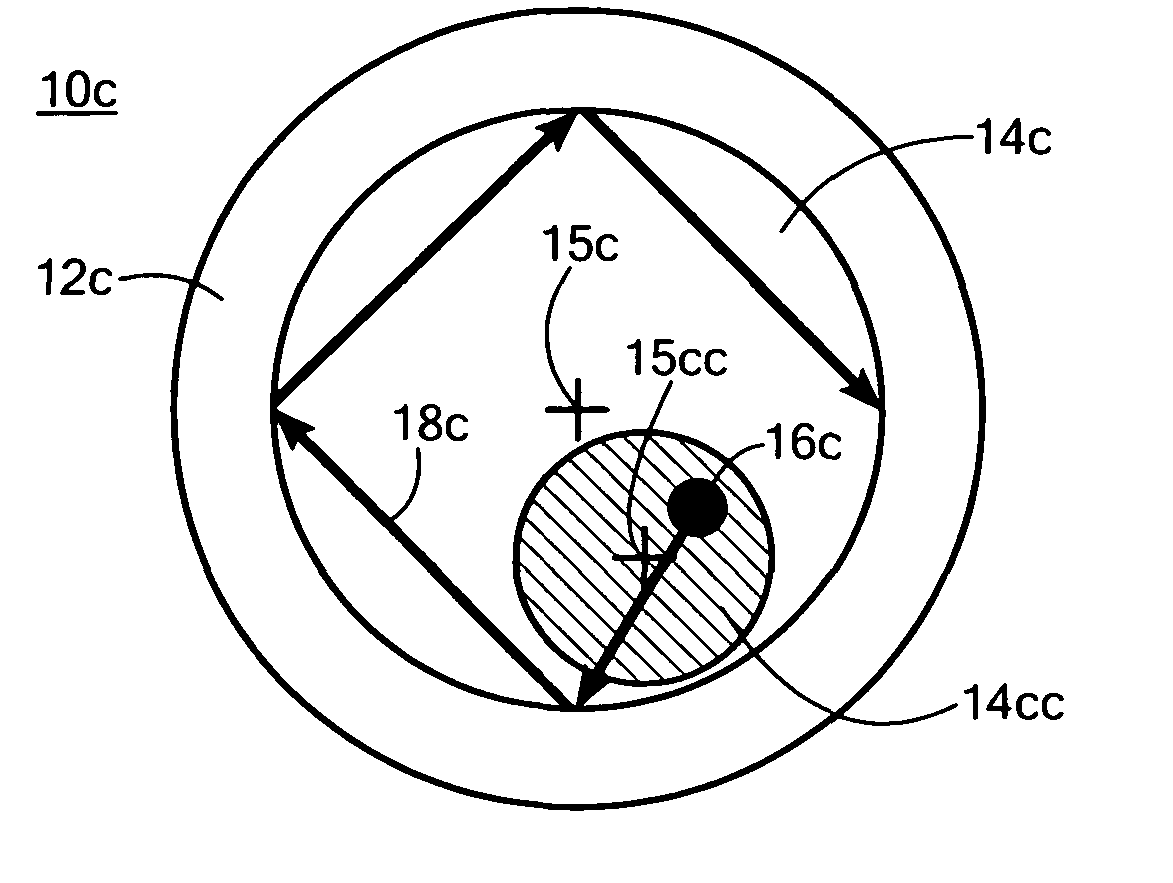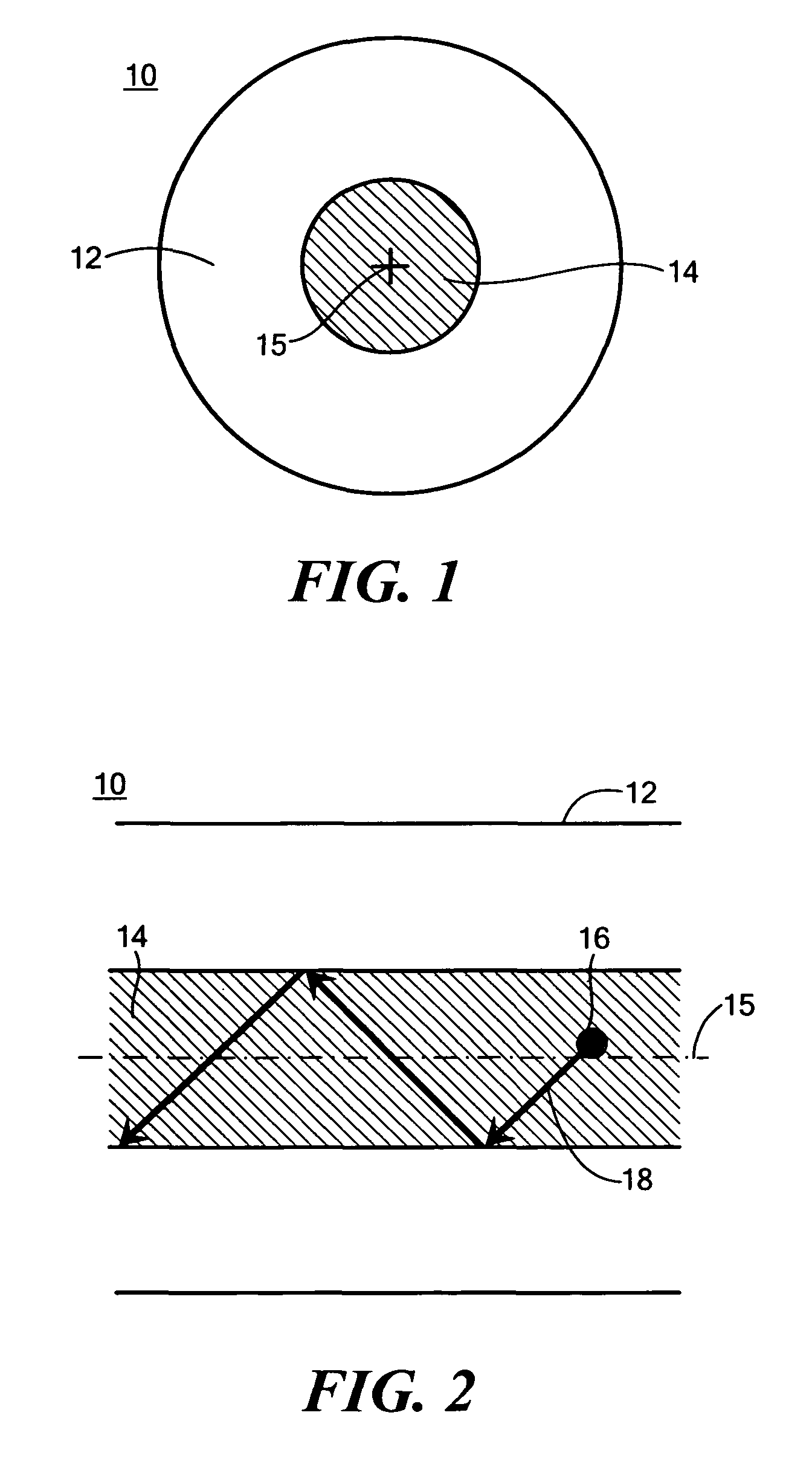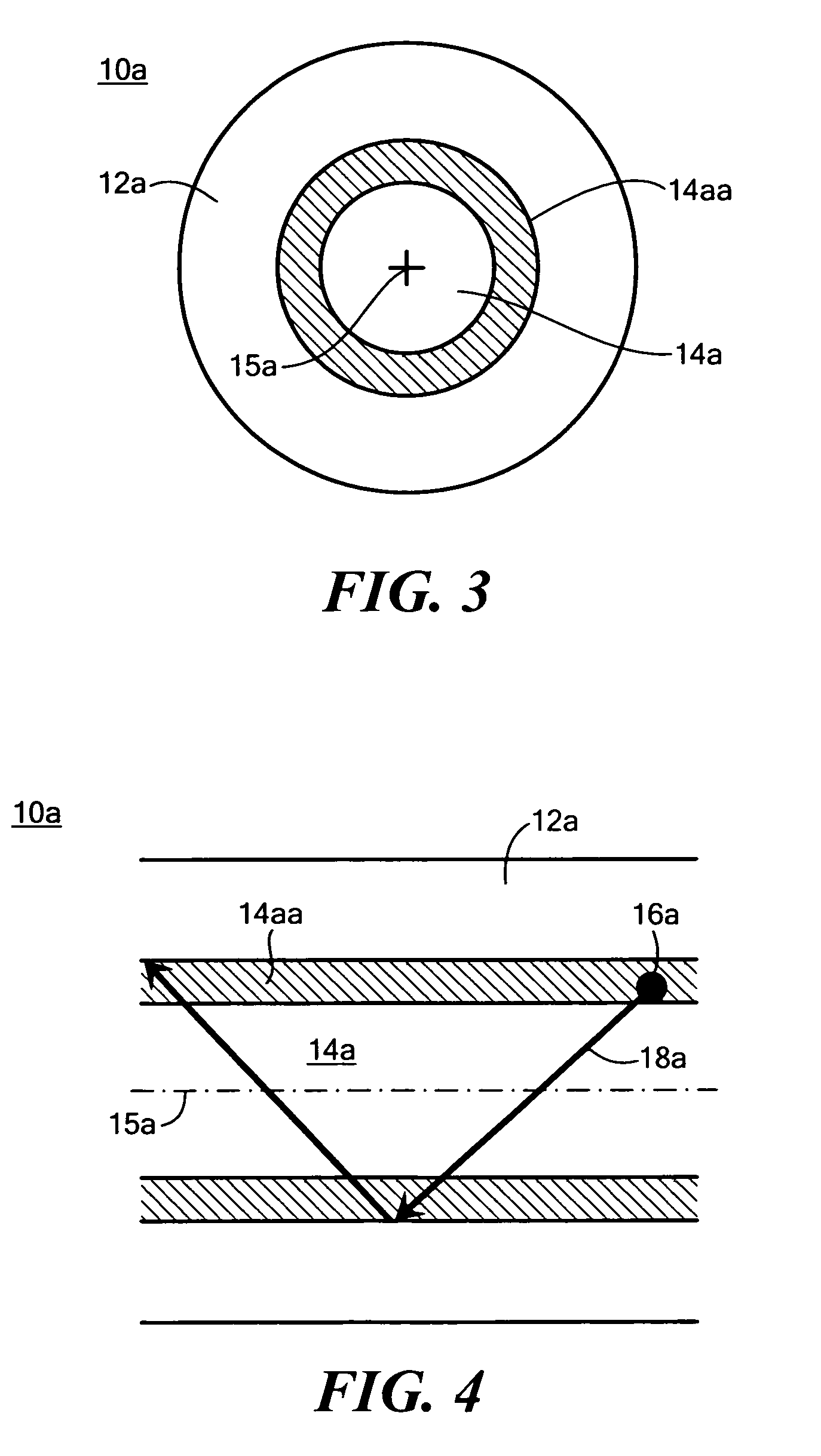High efficiency fiber-optic scintillator radiation detector
a radiation detector and high-efficiency technology, applied in the field of high-efficiency fiber-optic scintillator radiation detectors, can solve the problems of limited light acceptance angle of fiber-optic scintillators, achieve the effects of reducing detection cost, increasing 1/e length and detection sensitivity, and increasing detection sensitivity
- Summary
- Abstract
- Description
- Claims
- Application Information
AI Technical Summary
Benefits of technology
Problems solved by technology
Method used
Image
Examples
Embodiment Construction
[0025]Aside from the preferred embodiment or embodiments disclosed below, this invention is capable of other embodiments and of being practiced or being carried out in various ways. Thus, it is to be understood that the invention is not limited in its application to the details of construction and the arrangements of components set forth in the following description or illustrated in the drawings. If only one embodiment is described herein, the claims hereof are not to be limited to that embodiment. Moreover, the claims hereof are not to be read restrictively unless there is clear and convincing evidence manifesting a certain exclusion, restriction, or disclaimer.
[0026]There is shown in FIG. 1 a prior art fiber-optic scintillator radiation detector 10 including a cladding 12 typically made of glass or polymer having an index of refraction ncl. Inside of the cladding 12 is a combination core and scintillator 14 which couples the function of the scintillator and the core in one medium...
PUM
 Login to View More
Login to View More Abstract
Description
Claims
Application Information
 Login to View More
Login to View More - R&D
- Intellectual Property
- Life Sciences
- Materials
- Tech Scout
- Unparalleled Data Quality
- Higher Quality Content
- 60% Fewer Hallucinations
Browse by: Latest US Patents, China's latest patents, Technical Efficacy Thesaurus, Application Domain, Technology Topic, Popular Technical Reports.
© 2025 PatSnap. All rights reserved.Legal|Privacy policy|Modern Slavery Act Transparency Statement|Sitemap|About US| Contact US: help@patsnap.com



